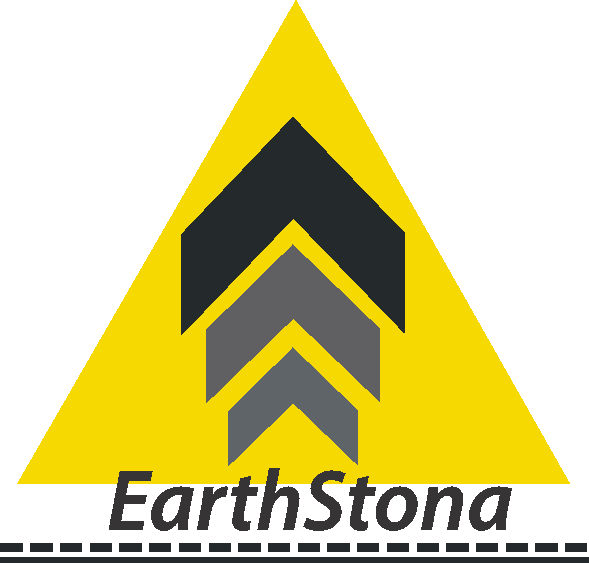- Login
- Register
What is Stone Cladding?

Stone cladding is a way of covering walls with a thin layer of natural or artificial stone. It's like putting a puzzle of thin stone pieces on the outside or inside of a wall. Imagine putting a stone 'jacket' on a building to make it look pretty and strong. This can be done on the outside or inside walls of residential, commercial, industrial areas, schools, or other buildings. The stones are cut into flat pieces and stuck onto the wall to give it a nice, stone-like appearance. It makes buildings look fancy and helps protect them too.
Types of House Cladding
- Natural Stone Wall Cladding
-
Brick Cladding
-
Wood Cladding
-
uPVC Cladding
-
Metal Cladding
-
Glass Cladding
-
Ceramic Cladding
-
Concrete Cladding
-
Composite Cladding
Top 7 ways Stone Cladding is Used
-
Outside Walls: Natural Stone cladding makes buildings look nice and protects them from rain and wind. It can be on houses, schools, or stores.
-
Inside Walls: Stone cladding makes rooms look pretty and cozy. It can be in living rooms, hallways, or even in bedrooms.
-
Fireplaces: Stone cladding makes fireplaces look special and warm. Families like to gather around them in the winter.
-
Decorative Walls: Stone cladding can make some walls stand out and look cool. It can be in places like schools or libraries to make them beautiful.
-
Pillars: Stone cladding makes big posts called pillars look nice. They can be at the front of houses or inside big buildings.
-
Kitchen Walls: Stone cladding makes kitchens look neat and clean. It can be behind stoves and sinks to keep the walls safe from splashes.
-
Gardens: Stone cladding in gardens makes them look nice and organized. It can be on walls around gardens or near pathways.
Reasons to use Stone Cladding
Durability: It provides an extra layer of protection, making walls stronger and more resistant to weather conditions.
Low Maintenance: It requires minimal upkeep compared to other materials, as it doesn't need frequent painting or sealing.
Value Addition: Stone cladding can increase the value of a property by improving its overall look and durability.
Versatility: It can be used on the interior and exterior walls of various buildings, such as houses, schools, and commercial structures.
Looks Pretty: Stone cladding adds a beautiful, natural look to buildings, making them stand out.
Easy application: Stone claddings are easy to apply on the walls as similar to any tile fixing.
How much does Stone Cladding Cost?
The cost of natural stone cladding can vary widely depending on several factors, including the type of stone, the quality, the thickness of the stone pieces, the complexity of the installation, and the region where it is being purchased and installed. Here are some general price ranges:
Material Cost:
-
Basic natural stone cladding materials can range from ₹70 to ₹250 per square foot.
-
Higher-end or more exotic stones can cost between ₹250 and ₹1800 or more per square foot.
Installation Cost:
-
Professional installation typically adds another ₹40 to ₹250 per square foot, depending on the complexity of the work and local labor rates.
-
More intricate installations, such as those requiring detailed cutting or special techniques, can cost even more.
Additional Costs:
-
There might be additional costs for surface preparation, adhesive materials, and sealing the stone if required.
-
Transportation costs, especially if the stone is heavy or sourced from a distant location, can also add to the overall expense.
Overall, a rough estimate for stone cladding, including materials and installation, could range from ₹150 to ₹700 per square foot. It's always a good idea to get multiple quotes from suppliers and contractors for a more accurate estimate for your project.
Maintenance Tips
Taking care of stone cladding keeps it looking nice and strong. Clean it gently with a soft brush and soapy water. Check for cracks or loose stones twice a year and fix them quickly. Seal the stone every 1-3 years to protect it from water and dirt. Make sure the water can drain away to prevent damage. Clean off any moss or mold with mild cleaners. Avoid hitting the stone or using strong cleaners that can harm it. Keep plants away from the stone to prevent damage. Sometimes, ask a professional to check and fix the stone to keep it in good shape.
Conclusion
Stone cladding offers a perfect blend of durability, versatility, aesthetics, and low maintenance, making it an ideal choice for transforming your space. Whether you want to add a touch of nature to your interior design or create a striking exterior facade, stone wall cladding provides endless design possibilities.
Related Questions
Q.1. I want to know if stone wall cladding is waterproof for exterior walls in high monsoon?
Yes, stone wall cladding can be waterproof for exterior walls in high monsoon conditions. Proper installation is key to ensuring that the cladding is effectively waterproof. This includes using the right type of sealants, ensuring proper drainage, and using a moisture barrier behind the cladding. When installed correctly, stone wall cladding can provide excellent protection against heavy rains and moisture, keeping the interior walls dry and safe.
Q.2. How thick is stone cladding?
Stone cladding can have different thicknesses. It can range from about 15 mm to 18 mm thick. Thinner stones are lighter and are used where weight matters. Thicker stones are stronger and keep buildings warmer.
Q.3. Where can i find quality natural stone wall cladding?
EarthStona is a top-notch manufacturer and supplier of natural stone cladding. They offer a wide range of wall cladding panel's and other exceptional stone products, such as stone carvings and murals.

